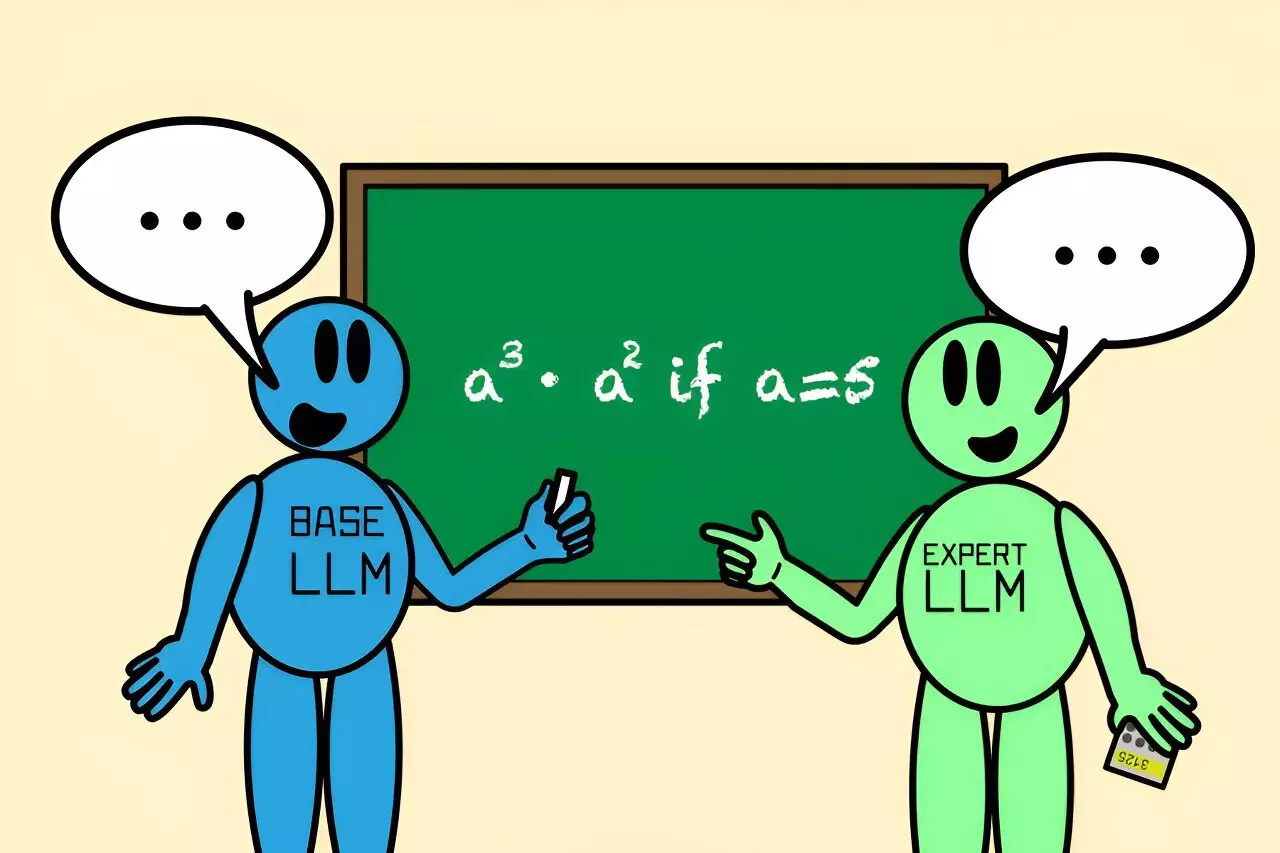In an era where artificial intelligence (AI) significantly impacts various sectors, the ability of language models to produce accurate and reliable outputs remains paramount. Consider a scenario where an individual is posed with a complex question, such as the detailed mechanisms of a specific disease. If the answer eludes them, the logical response is to seek assistance from an expert. Similarly, large language models (LLMs), which serve as the backbone for many AI-driven applications, can also benefit from collaborative approaches. The challenge lies in teaching these models the right moments to “phone a friend”—or collaborate with more specialized models—to enhance their response accuracy.
Recent research from MIT’s Computer Science and Artificial Intelligence Laboratory (CSAIL) introduces an innovative algorithm named “Co-LLM.” By training a general-purpose LLM to identify when to consult a specialized model, Co-LLM mimics the nuanced human ability to recognize when deeper expertise is needed. This collaborative mechanism has the potential to significantly advance the realm of natural language processing by crafting more precise responses to inquiries.
The Co-LLM framework operates on a relatively straightforward yet effective concept: pairing a general-purpose LLM with a specialized counterpart to enhance the quality of responses. As the general-purpose model generates an answer, Co-LLM meticulously assesses each token of its output, considering whether to pass the baton to a more knowledgeable model for certain segments. This interaction is not only about accuracy but also about efficiency—by consulting the expert model selectively rather than at every step, Co-LLM can produce answers more swiftly without sacrificing quality.
The cornerstone of this approach is the switch variable, a machine learning tool that helps the general model evaluate the competence of its output on a token-by-token basis. When the general model encounters potential pitfalls—where its knowledge may falter—the switch variable signals an opportunity to involve the specialized model. This method echoes a project management style, where teams are guided to leverage expertise where it will yield the most benefit.
The implications of Co-LLM’s collaborative intelligence extend far beyond theoretical frameworks. For example, consider a query about the ingredients in a specific prescription drug. A standalone general-purpose LLM might falter and deliver incorrect information. However, when integrated with a specialized model trained on biomedical data, the outcomes are significantly enhanced, producing accurate insights akin to what a medical practitioner would provide.
Moreover, Co-LLM has shown remarkable adaptability across domains. One illustrative case involved solving complex mathematical problems. When a general LLM miscalculated an arithmetic problem, the addition of the expert model led to the rectification of the error. The enhanced collaborative process yielded results that outperformed fine-tuned and specialized models operating independently, showcasing the superiority of Co-LLM’s integrative method.
Despite its promising capabilities, the MIT researchers recognize that the Co-LLM framework can evolve further. One area of potential enhancement lies in integrating human-like self-correction abilities. They aim to develop a more robust mechanism that enables the algorithm to backtrack when expert input does not meet accuracy standards, ensuring a high-quality response every time. This proactive approach not only would allow Co-LLM to refine its outputs continuously but also elevate user trust in the model’s reliability.
Additionally, the ability to update the specialized model based on new information is another prospective improvement. By ensuring that the expert knowledge remains current, Co-LLM can maintain relevance in rapidly evolving fields, further solidifying its utility across various applications—from medical advice to document drafting.
Co-LLM exemplifies the evolution of language models toward more intelligent, collaborative systems that echo our innate problem-solving behaviors. As researchers refine this algorithm, the prospect of reliable, nuanced, and accurate language processing models will become a reality, catering to an array of professional and educational contexts. Colin Raffel, an expert in the field, aptly summarized it: Co-LLM not only facilitates a unique routing decision-making process among models but also elevates the collective intelligence within AI systems.
As exploration continues in this domain, the contributions of Co-LLM could extend far beyond mere text generation, impacting sectors that rely on accuracy and expertise. Ultimately, the quest for smarter AI will empower humans with tools designed not just to mimic our cognitive processes but to collaborate effectively—leading to a future where technology augments human capabilities seamlessly.


Leave a Reply